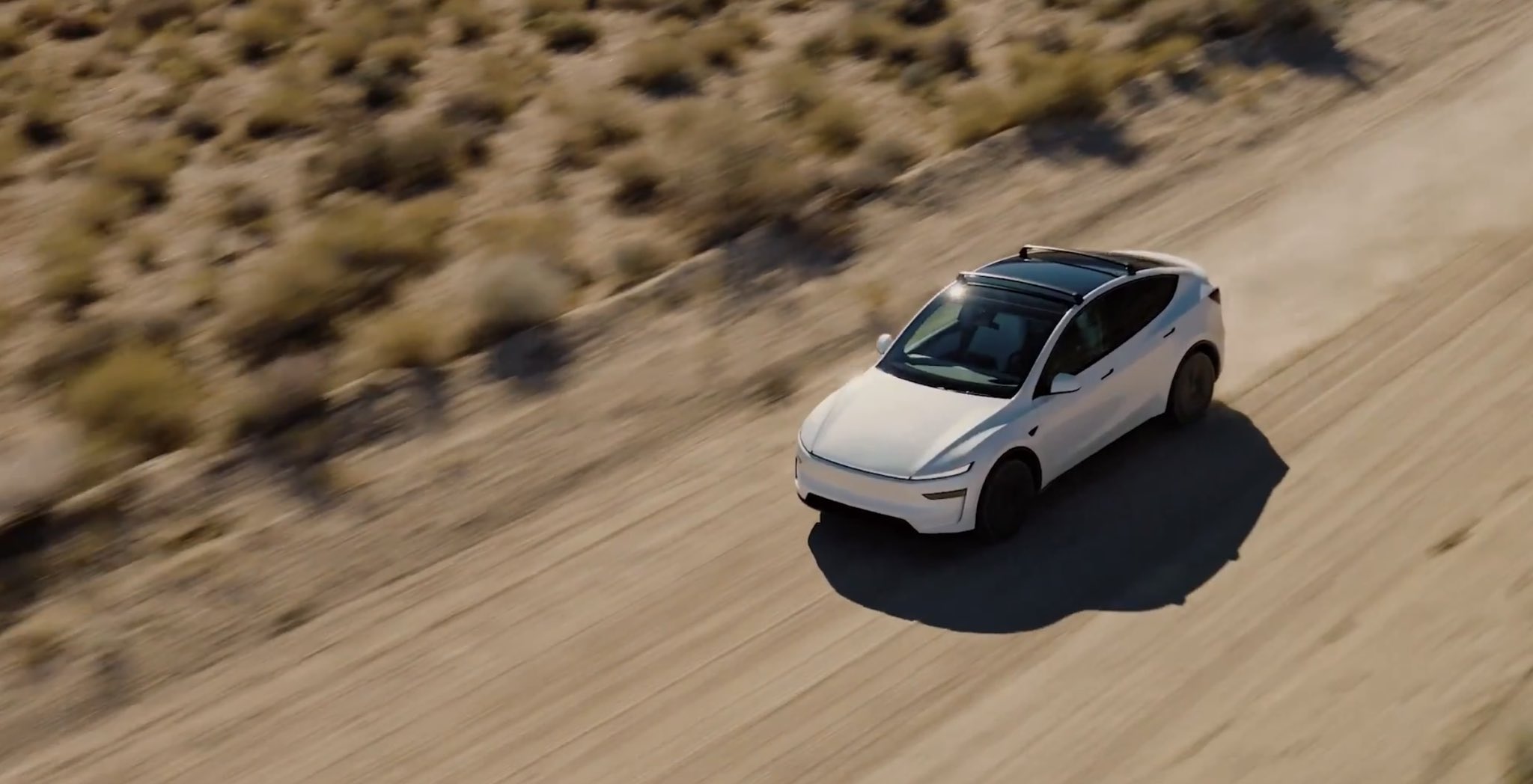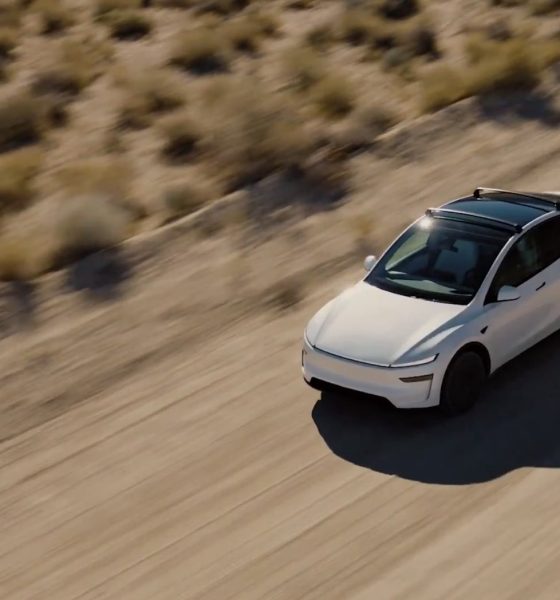Tesla has shared a new video about the design and engineering of the refreshed Model Y, revealing a few new features and talks from some of the company’s top executives.
In a new video released on social media on Saturday, Tesla shared a few new details about the design and engineering of the so-called Model Y “Juniper,” which the company launched in multiple markets in recent weeks as expected. The interview features Head of Design Franz von Holzhausen, who talks about the approach to the design of the new Model Y, along with interviews with multiple other executives and engineers from the company.
“When we set out to redesign the Model Y, we looked at trying to give the car a little bit more of its own unique personality,” von Holzhausen says in the video’s intro.
The video also includes a few moments from Tesla’s Vice President of Vehicle Engineering Lars Moravy, along with a few others from the company.
Tesla’s refreshed Model Y design should make repairing this part easier
READ MORE ON TESLA’S NEW MODEL Y:
- Tesla Model Y ‘Juniper’ visiting Europe
- New Tesla Model Y launches in the U.S., estimated deliveries in March
- New Tesla Model Y ‘Juniper’ units are arriving in China’s showrooms
- Tesla discounts U.S. Model Y inventory ahead of refresh launch
- Tesla China is clearing out legacy Model Y units: here’s what’s left
Tesla Model Y refresh: other new features in the 2025 release
Tesla Model Y front camera
The new Model Y includes a front fascia camera with a 180-degree scope of view, offering improvements for “automatic assisted driving and advanced smart summon,” as stated by the company last month. The new video details nine cameras overall for optimal viewing angles to assist the Autopilot and Supervised Full Self-Driving (FSD) systems.
Credit: Tesla | X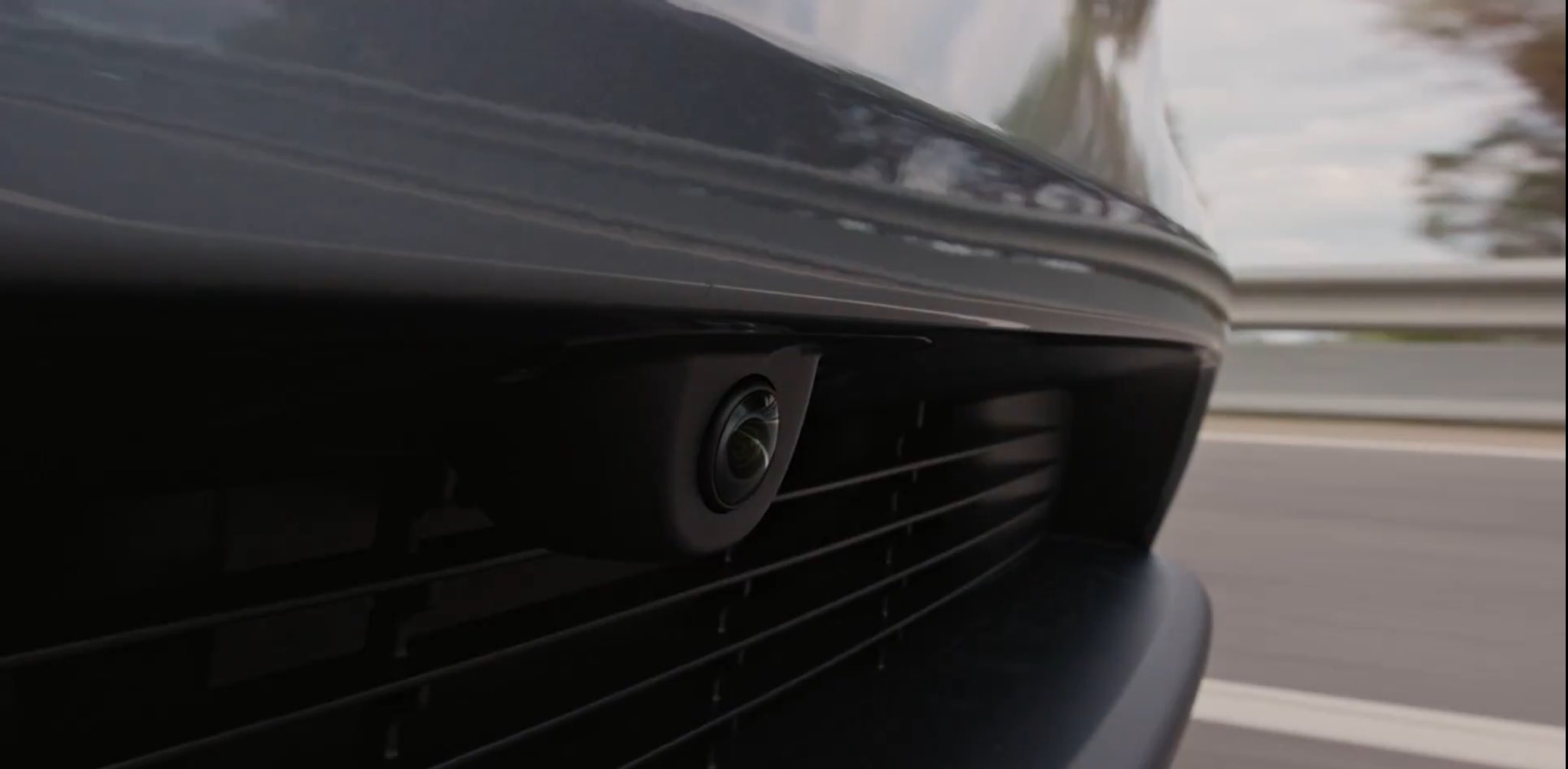
Tesla Model Y front lightbar and reflective rear lightbar
As was revealed upon Tesla’s initial release of the new 2025 Model Y, the design includes both a front lightbar and a reflective rear lightbar, both of which represent pretty major exterior changes from the legacy version of the SUV. In the video, Tesla’s Creative Manager of Design Sahm Jafari points out how the front lightbar makes the Model Y refresh look a little bit wider, along with boosting the amount of air running over the front tires for a slight improvement to aerodynamics.
Credit: Tesla | X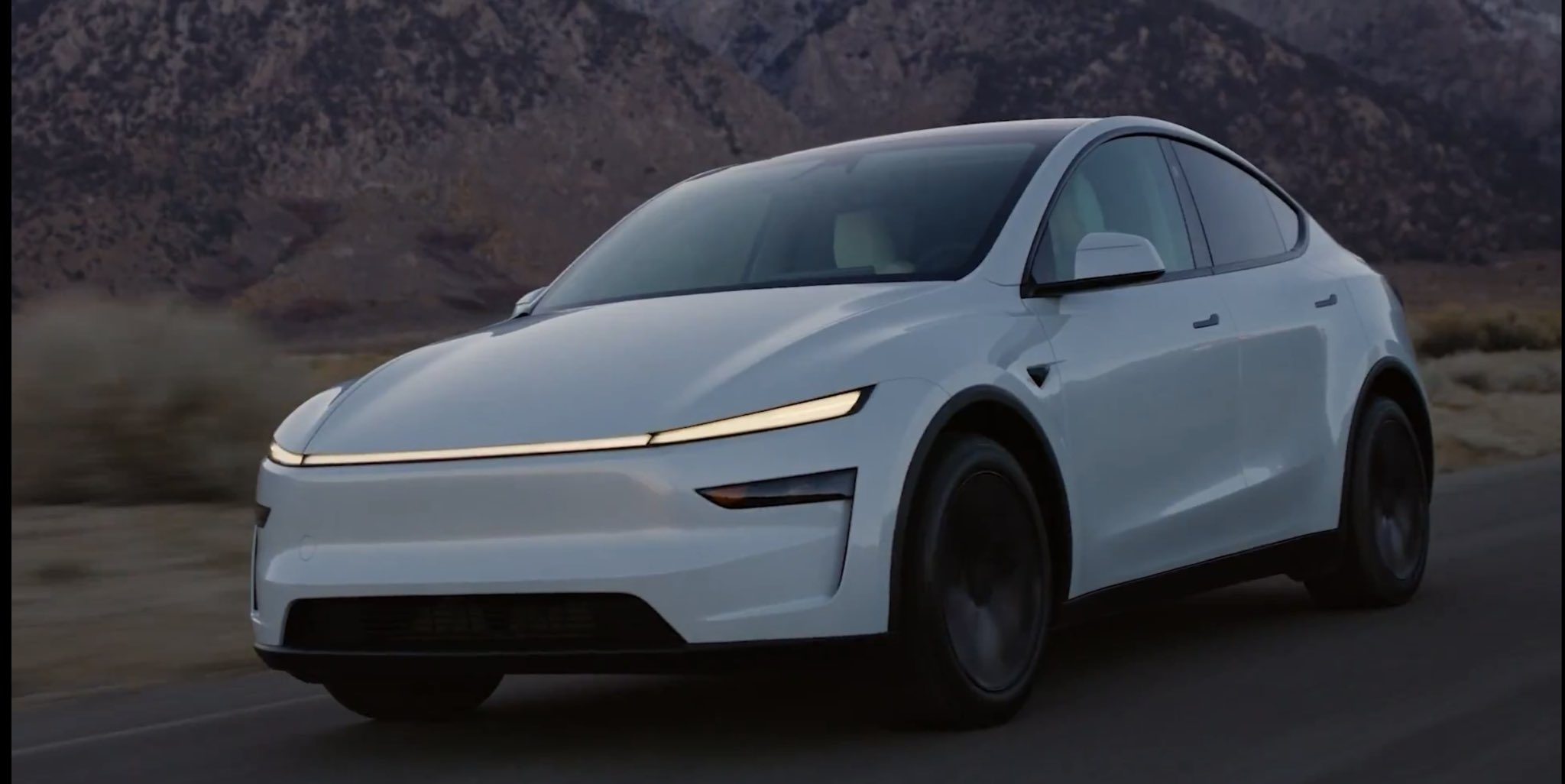
Tesla has released a deep dive on the design and engineering of the new Model Y.
There’s a great tidbit about giving it “its own unique personality,” and how the new light bar gives it a wider look.
Check it out:
— TESLARATI (@Teslarati) February 8, 2025
Tesla Model Y frunk and drain plug
The Model Y also includes what the company calls a more “utility-focused” frunk, including a drain plug that makes it easy to use the space as a wash station, cooler, or otherwise. Tesla also says it plans to release some new, specifically designed accessories for the Model Y frunk for even more use cases.
Credit: Tesla | X Credit: Tesla | X Credit: Tesla | X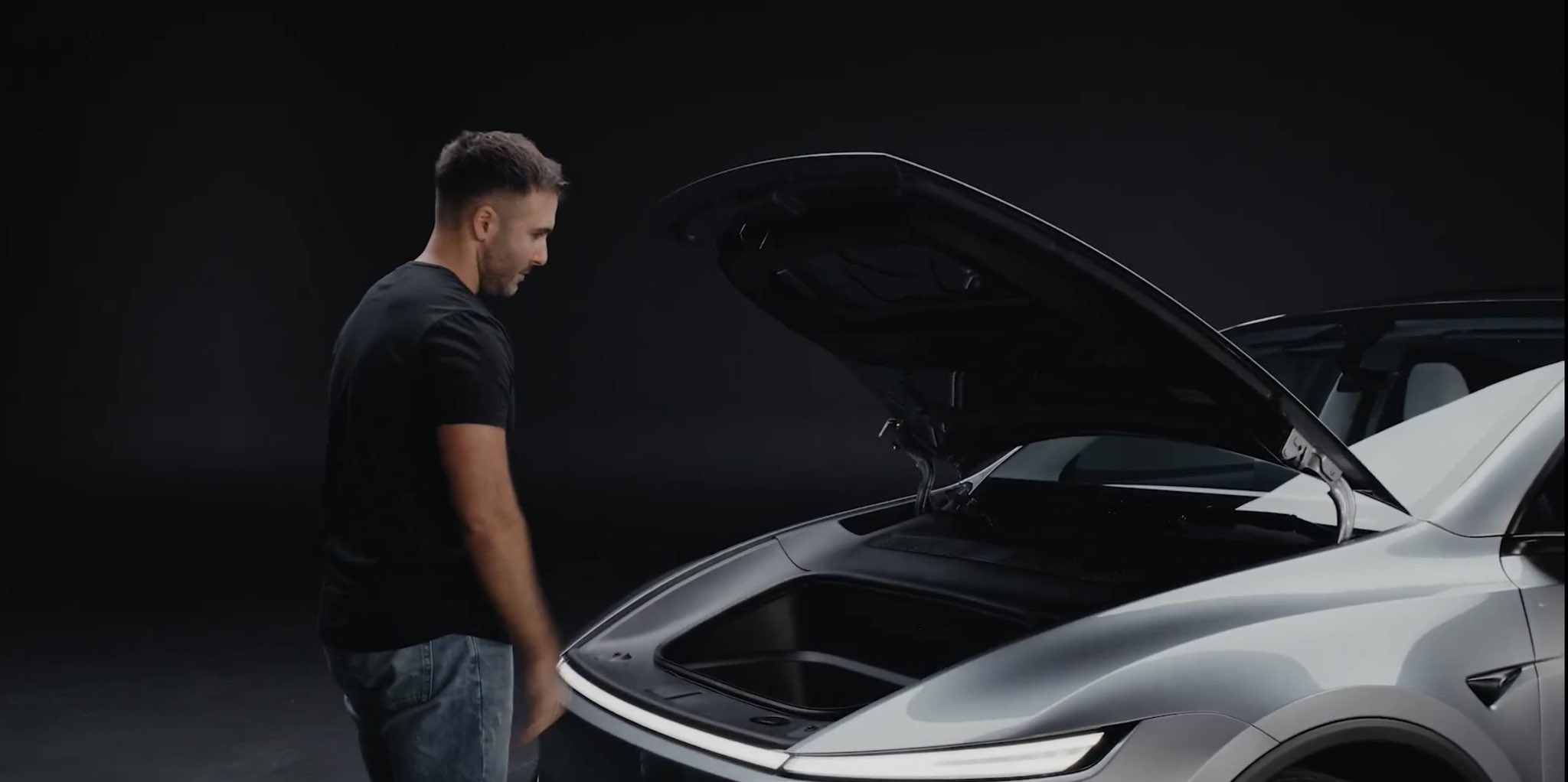

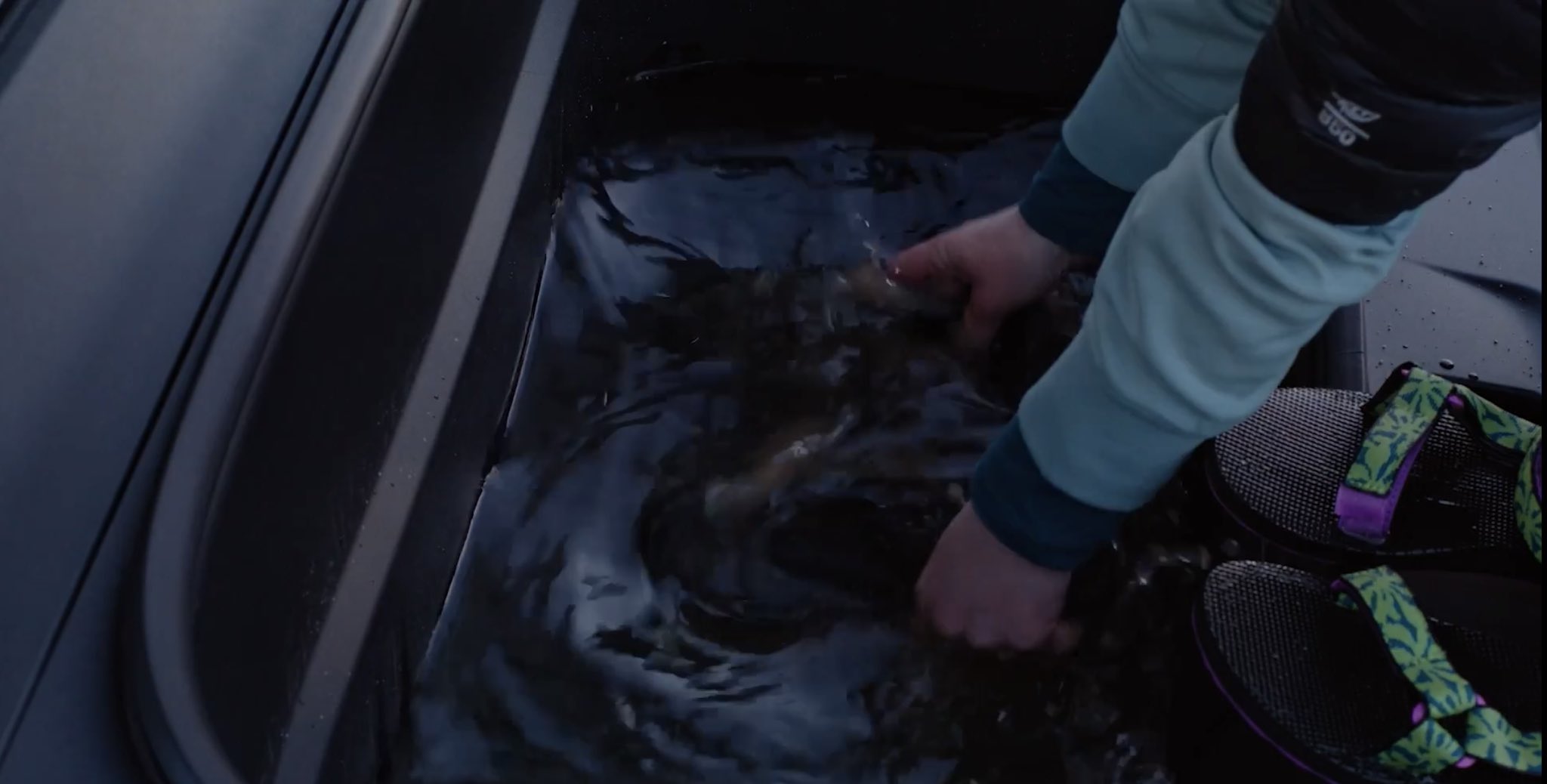
Tesla Model Y tires
The Model Y “Juniper” also comes with upgraded tires developed by Tesla to be even more efficient than the legacy model, offering lower resistance for improved handling and less in-cabin road noise.
Credit: Tesla | X Credit: Tesla | X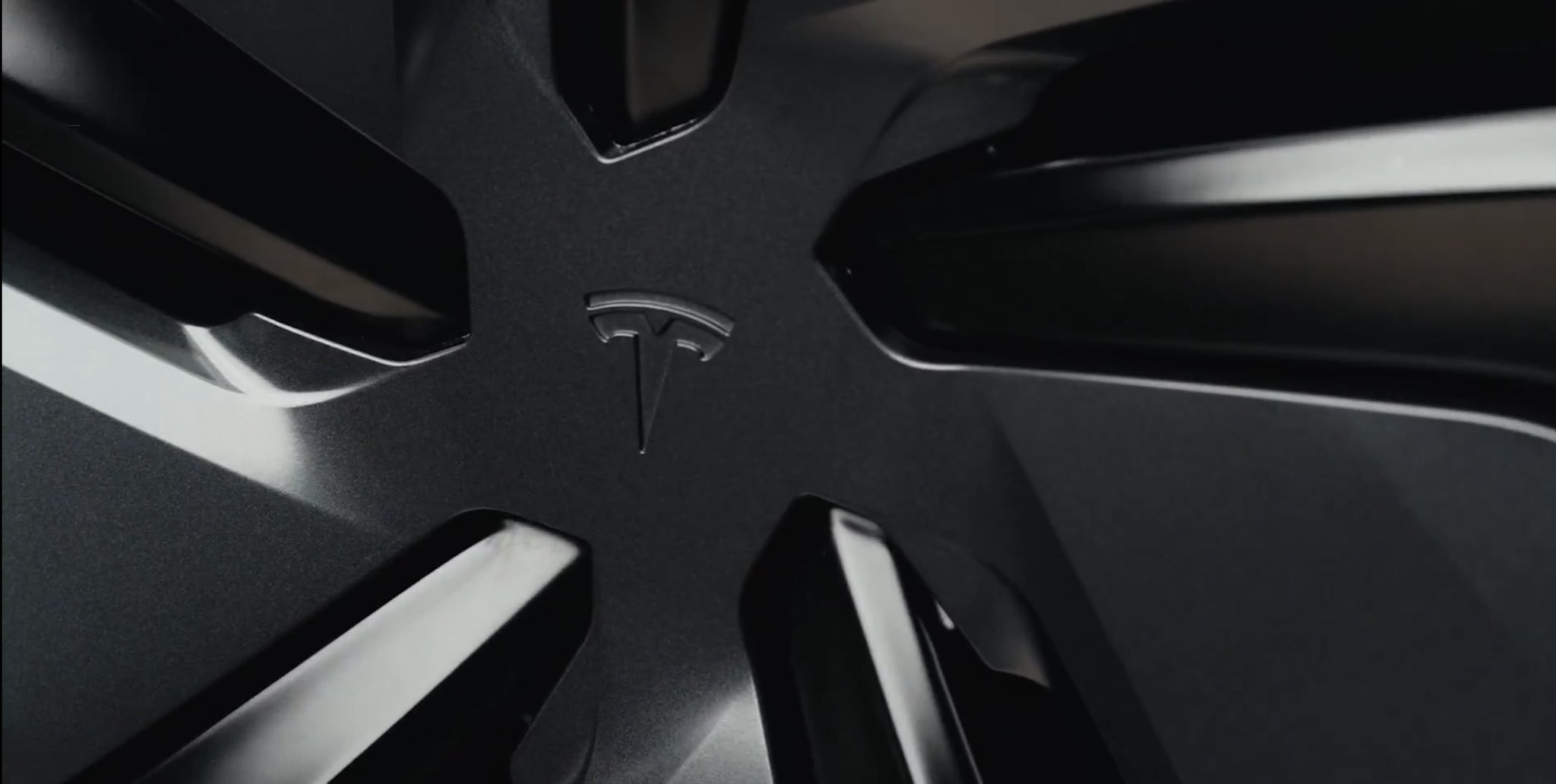
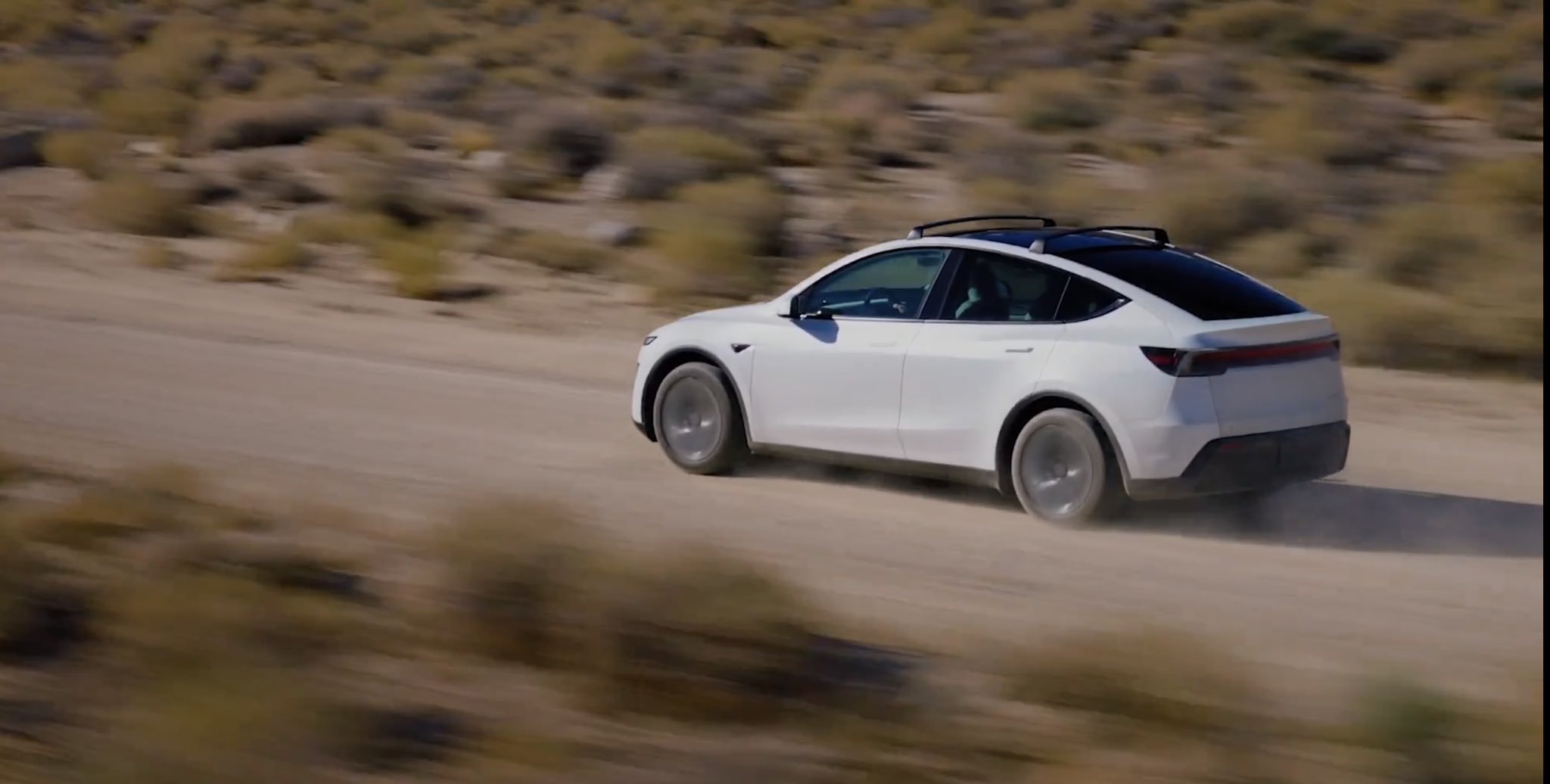
Tesla Model Y rear screen with Bluetooth pairing
The new Model Y also includes a rear infotainment screen with the ability to pair with up to two Bluetooth headsets, letting the driver and other passengers listen to the media of their choice while children or other rear passengers can tune into what they want. The vehicle includes 16 speakers total, and the video also contains details on how Tesla hid some of them to make the audio as immersive as possible.
Credit: Tesla | X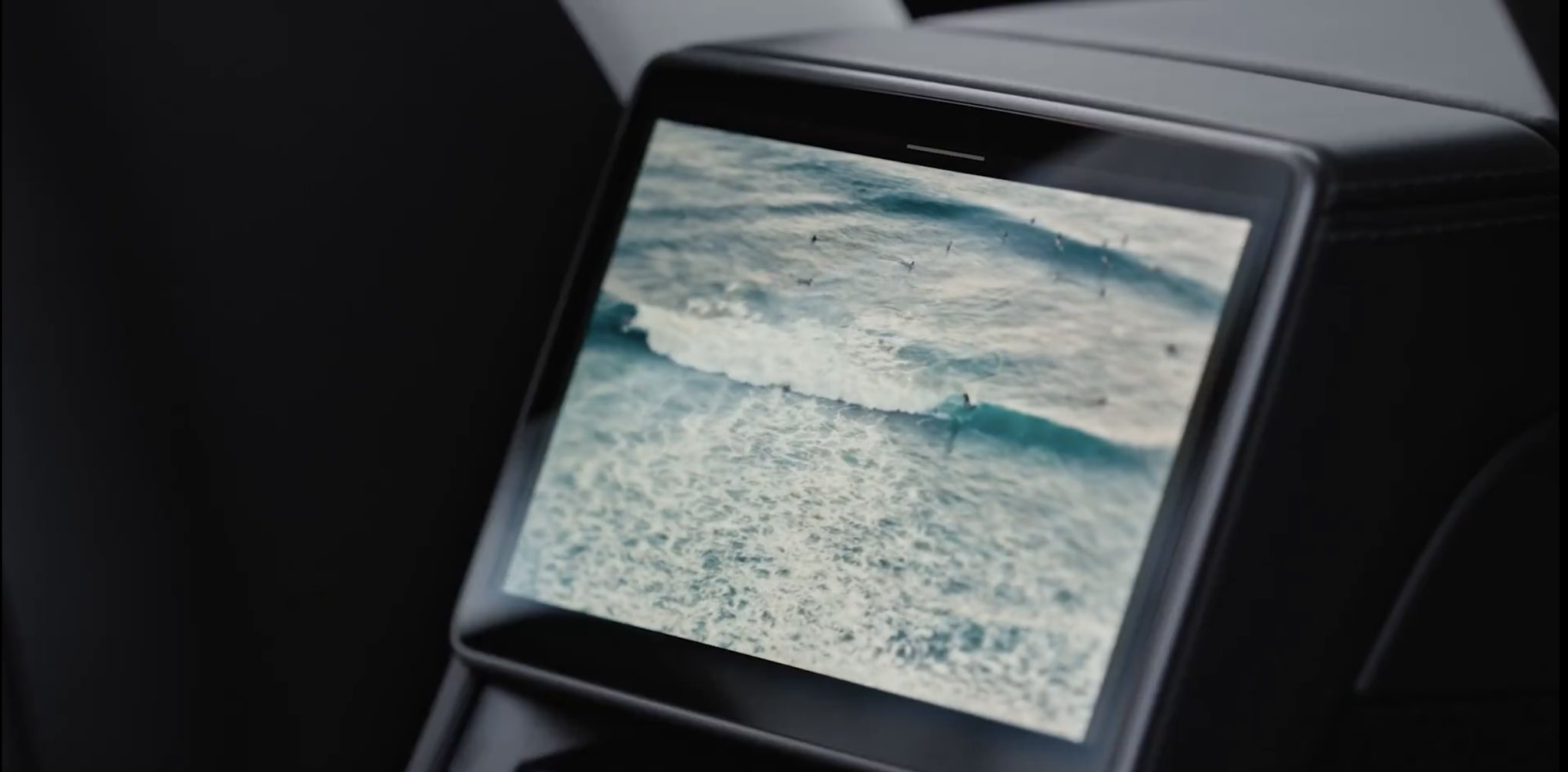
Tesla Model Y upgraded acoustic glass
Tesla’s upgraded acoustic glass and its other design improvements result in a noise reduction of 20 percent, according to the video. One of these improvements includes the vehicle’s upgraded seals, which let the blowers run at lower speeds than those of the legacy Model Y—ultimately contributing to the lower in-cabin volume.
Credit: Tesla | X
You can see the full video about the refreshed Model Y below, as released by Tesla on Saturday.
What are your thoughts? Let me know at zach@teslarati.com, find me on X at @zacharyvisconti, or send us tips at tips@teslarati.com.
Tesla is offering a crazy Supercharging incentive on its two ‘sentimental’ vehicles
Need accessories for your Tesla? Check out the Teslarati Marketplace:

News
Lucid and Uber team with Nuro for new robotaxi program with Gravity SUV
The plan currently is to launch it to the public in the Bay later this year.
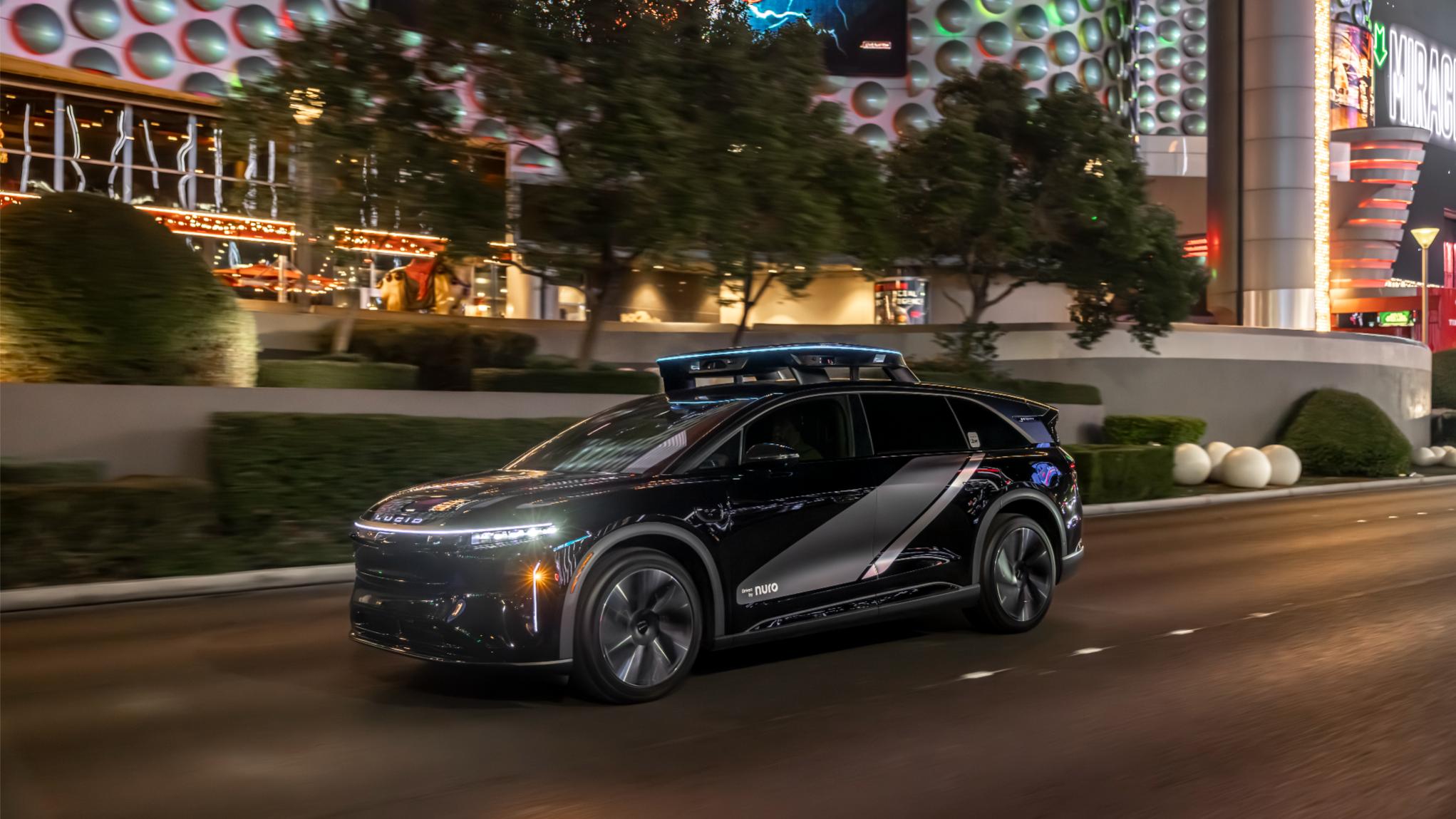
Lucid and Uber are teaming up with Nuro to launch an autonomous robotaxi program utilizing the automaker’s Gravity SUV. The project will be unveiled at CES 2026, introducing an in-cabin rider experience completely designed by Uber, the world’s largest ride-sharing service.
Back in 2025, the partnership between the three companies was announced, aiming to launch a unique ride-sharing platform using over 20,000 Lucid vehicles equipped with the Nuro Driver technology. The vehicles are owned and operated by Uber.
The companies have already initiated some testing in the San Francisco Bay Area, which is a big step in the right direction for the project. The plan currently is to launch it to the public in the Bay later this year. Nuro will lead the testing using robotaxi engineering prototypes that are supervised by autonomous vehicle operators.
Currently, there are over 100 robotaxis in the Engineering Test Fleet.

The Gravity vehicles are fitted with a next-gen sensor array featuring high-res cameras, solid-state LiDAR sensors, and radars that will provide a 360-perception model, as well as a “purpose-built roof-mounted halo designed to maximize sensor visibility,” which is seen on top of the Gravity unit above.
The halo also has integrated LEDs to help riders more easily identify the correct vehicle by displaying their initials. The halo will also provide clear status updates from pickup through dropoff.

These units for the robotaxi program between the three companies will start being produced later this year at Lucid’s Arizona AMP-1 factory.
Uber chose the Lucid Gravity specifically due to its “unprecedented comfort” and its reputation, as it was named to Car and Driver’s 10 Best for 2026. But Uber is customizing some things for the Gravity so that it is specifically catered to robotaxi riders:
- For the first time, Uber is designing the in-vehicle rider experience, which will include interactive screens with entertainment and climate control options, as well as support contacts and vehicle maneuver requests, like a request to pull over.
- It will also have in-vehicle visualization, showing what the robotaxi sees and its path in real-time. This will be a nice transition for those who are skeptical about driverless vehicles, and will show what the vehicle and its sensors, LiDAR, and cameras see.
- The Gravity is also a sizeable SUV, which will give riders space for themselves and their luggage.
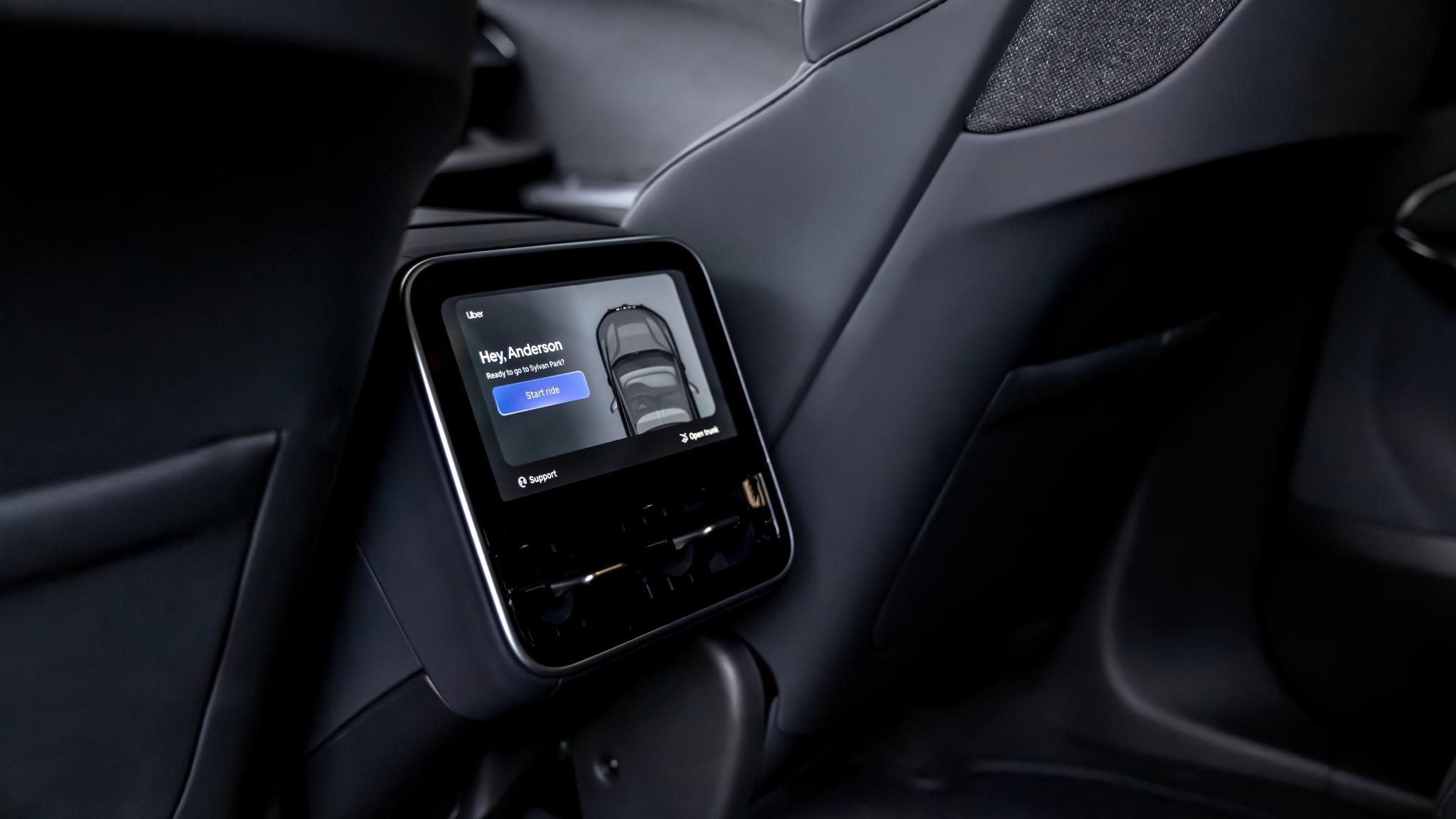
This is the latest application of a ride-hailing platform that leans on autonomy for its operation, essentially phasing out the need for human drivers in various markets, starting with the Bay Area.
More companies are dipping their toes in the project, giving them the opportunity to establish some early momentum, as there are only a handful of companies that are currently operating this in the United States. Uber, Lucid, and Nuro aim to be the next, and initiating this program at this time is big for their chance at success.
News
Tesla Cybercab test fleet expands in Austin and Bay Area
In total, the Robotaxi fleet is comprised of 139 total vehicles in both Austin and the Bay Area. The vast majority of these units are Model Y cars, but the Cybercab is the most recent addition to the fleet.
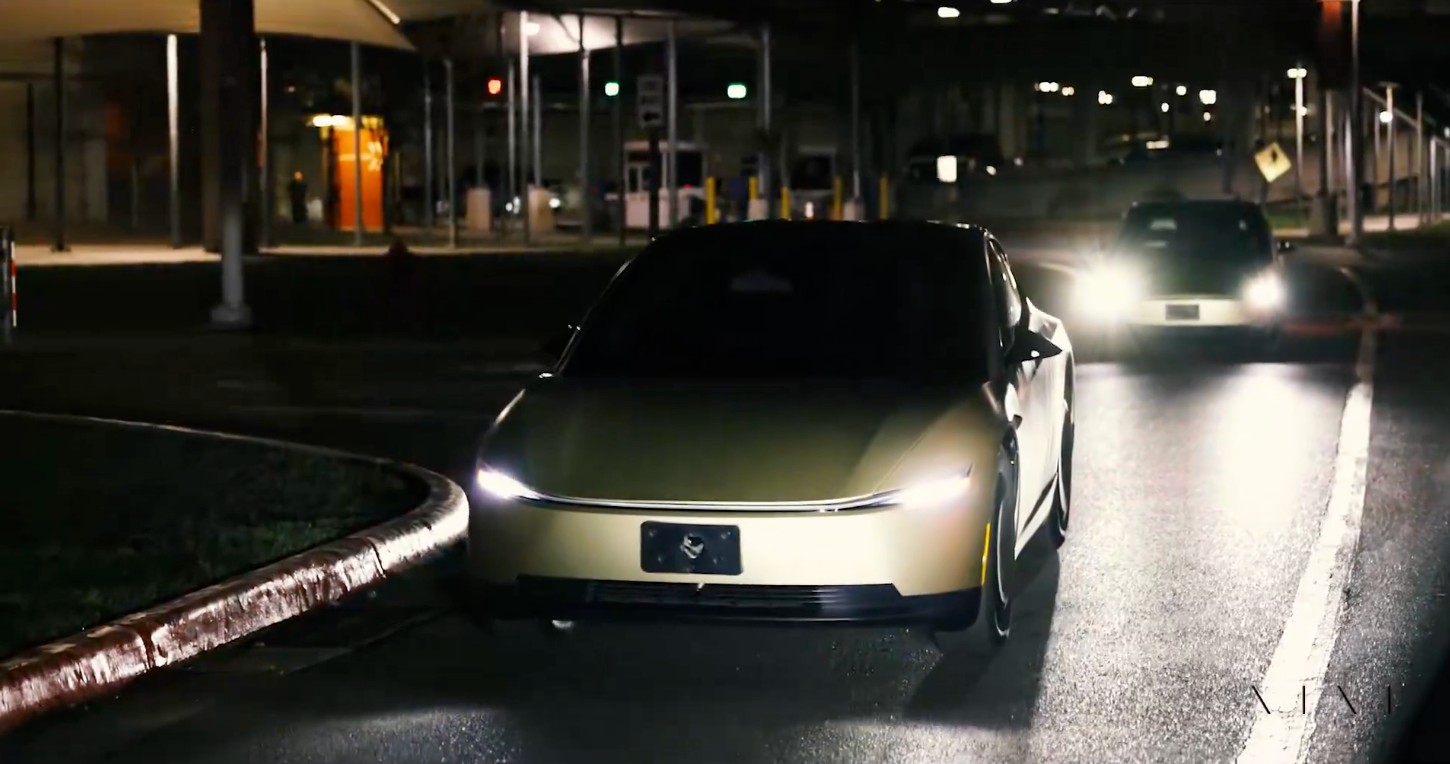
Tesla has expanded its fleet of Cybercab test units in both Austin and the Bay Area of California, as the vehicle is heading toward the first production stages, hopefully early this year.
As the first few units were spotted in Austin late last year, Tesla is now operating seven total Cybercab units in testing, three of which were spotted over the weekend in Texas. Bay Area testing just started on January 3, with both units also being added to the fleet on Saturday and Sunday.
In total, there are seven Cybercabs now operating, according to Robotaxi Tracker, each with different license plates that have been observed over the course of the last several weeks; the first unit was spotted in Austin on December 18.
The future should look like the future, indeed.
The Cybercab really changes the look of the roads, but without the shock factor of the Cybertruck. It’s a pretty good balance, imo.pic.twitter.com/PM0KbjzhxR
— TESLARATI (@Teslarati) December 22, 2025
The expansion of the Cybercab test fleet is a slow but steady process that Tesla is taking to get the car on public roads ahead of its initial production stages.
CEO Elon Musk said last week that Tesla has already started some test production phases of the vehicle at Gigafactory Texas, which is located outside of Austin.
Tesla Cybercab tests are going on overdrive with production-ready units
However, it will likely be some time before Tesla actually adds it to the fleet for rides that are available to the public. Tesla plans to build it without a steering wheel or pedals, so the company will have to reach Level 5 autonomy at that point before customers can hail rides and take it to their destination.
In total, the Robotaxi fleet is comprised of 139 total vehicles in both Austin and the Bay Area. The vast majority of these units are Model Y cars, but the Cybercab is the most recent addition to the fleet.
News
Tesla Germany’s “Giga Train’s” improved service gets rave reviews
As per recent reports, Tesla’s free “train”Giga Train” service will increase its daily trips to six starting this week.
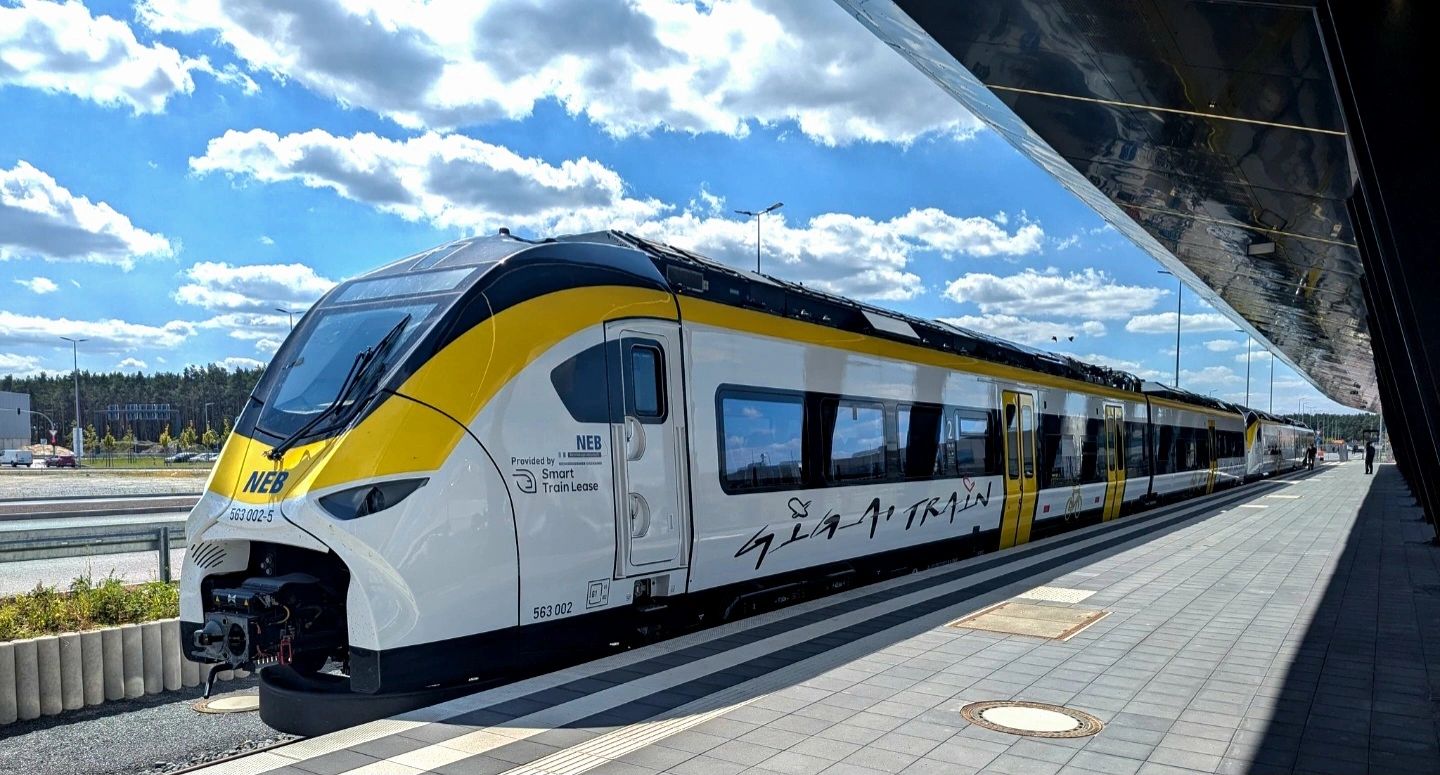
Tesla has expanded its employee shuttle service from Berlin Ostbahnhof East Station to the Gigafactory Berlin-Brandenburg. As per recent reports, Tesla’s free “train”Giga Train” service has increased its daily trips to six starting this week.
The service has so far received positive reviews from the facility’s employees, some of whom noted that the upgraded shuttle train has reduced their travel time by a notable margin.
Giga Berlin’s expanded shuttle service
As noted in a rbb24 report, Giga Berlin’s free shuttle train now operates six times daily, up from one previously. The service also goes directly to the Model Y production facility without stopping at other stations. Tesla employee Dené Schunck described the service to rbb24 in a comment: “The shuttle goes directly to the factory site, without any transfers, which reduces the commute time for our employees by almost half,” Schunck stated.
Operated by Ostdeutsche Eisenbahngesellschaft (Odeg) after switching from Niederbarnimer Eisenbahn (NEB), Giga Berlin’s shuttle train, which also stops at Ostkreuz and Erkner, remains free for all riders, including non-Tesla employees. It has been fully funded by Tesla Germany since September 2023.
Employees praised the changes: One Giga Berlin worker stated that it “definitely makes the journey easier” because employees “used to need two hours for the round trip from Berlin, but now it’s significantly faster.”
Tesla Germany’s previous comments
In late 2025, reports emerged stating that Tesla Germany will be expanding its shuttle train service by adding direct rail trips from Berlin Ostbahnhof to Giga Berlin-Brandenburg. In a comment, Tesla Germany stated that the updated service would mirror the shift changes for the Model Y factory’s employees.
“The service includes six daily trips, which also cover our shift times. The trains will run between Berlin Ostbahnhof (with a stop at Ostkreuz) and Erkner station to the Gigafactory,” Tesla Germany noted.
At the time, Tesla Germany also stated that despite construction being done at Fangschleuse and Köpenick stations, the route of the Giga Train has been optimized to maintain a predictable 35-minute travel time. This should provide Tesla Germany’s employees with a convenient way to travel to and from Giga Berlin.
